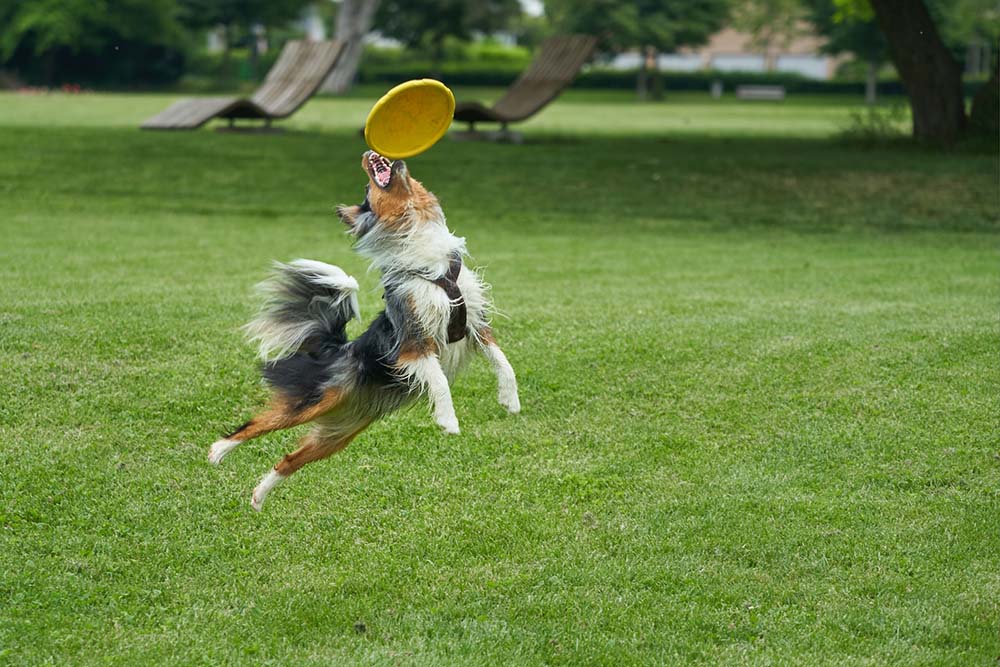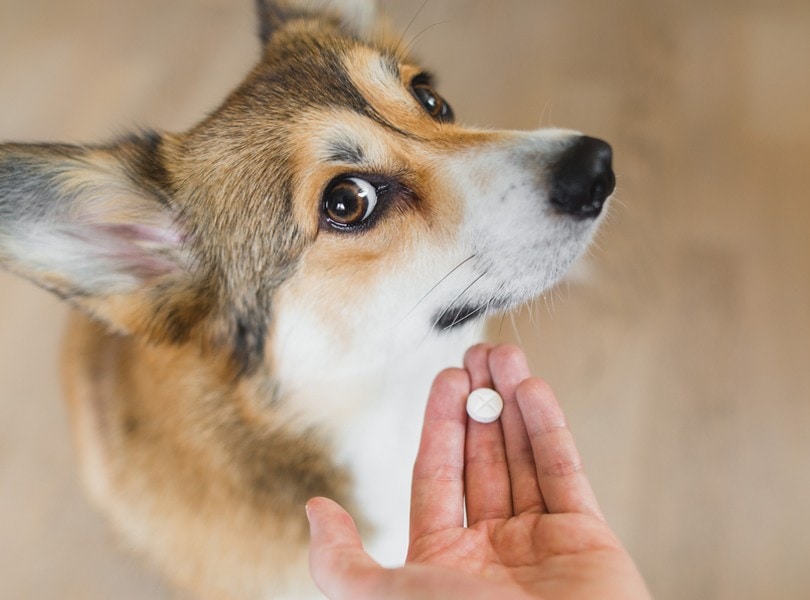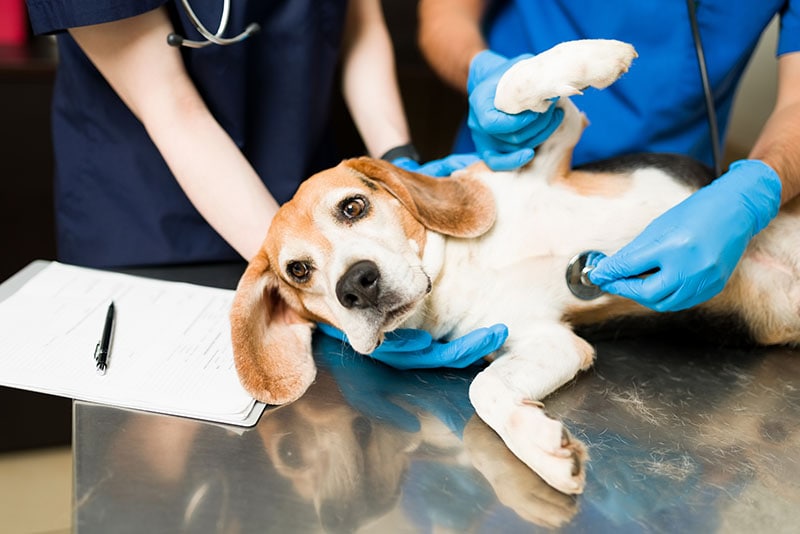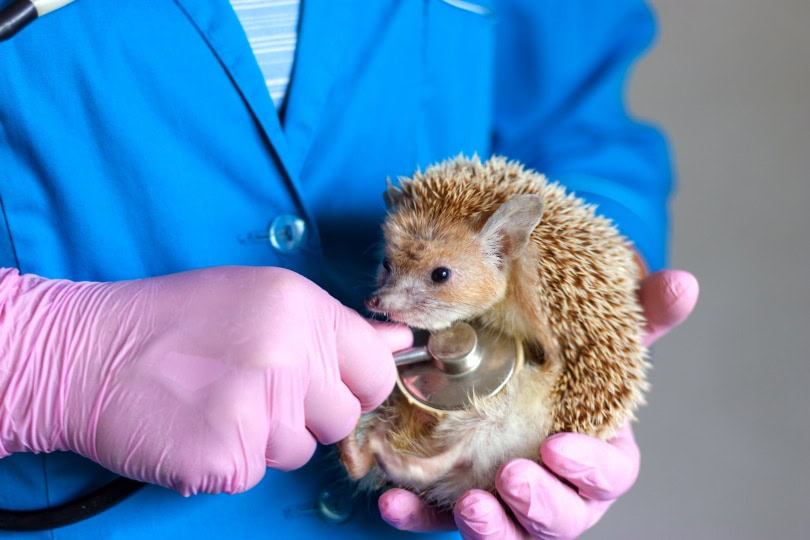VET APPROVED

The information is current and up-to-date in accordance with the latest veterinarian research.
Learn more »Click to Skip Ahead
While giving Benadryl to your dog to keep them from bouncing off the walls might seem like a good idea, the truth is that administering this medication to calm your canine is not recommended.
The following article discusses Benadryl usage in canines, reveals veterinarian-verified indications for this common medication, and offers tips on what you can do instead to help your high-strung hound relax.

What Is Benadryl?
Benadryl is the brand name of the medication known as diphenhydramine. It’s an antihistamine, a class of medications commonly given to humans to treat the signs associated with histamine release, such as sneezing or nasal congestion due to allergies. It’s also used in humans for the treatment of nausea, vomiting, and insomnia.
What Conditions Can Benadryl Be Used to Treat?
- Anaphylaxis: Anaphylaxis is a severe, acute allergic reaction mediated by the massive release of inflammatory substances within the body. It’s a life-threatening condition with a wide variety of potential stimuli, including insect or snake bites, vaccination, and medication administration. Diphenhydramine is used in conjunction with other medications for the treatment of anaphylaxis, to help improve cutaneous (affecting the skin) and nasal signs associated with an allergic reaction.
- Mast Cell Tumors (MCT): These are the most common malignant skin tumors in canines. Treatment with diphenhydramine in cases of MCT is often utilized either during the surgical removal of a tumor or on a long-term basis in cases of tumors that are considered to be non-surgical. The goal of treatment is to prevent systemic allergic or anaphylactic reactions that may be associated with histamine release from an MCT.
- Pruritus: Pruritus, or itching, is a sign commonly associated with allergies in dogs. Diphenhydramine and other antihistamine medications may provide relief for dogs experiencing mild itching. This medication tends to be more effective when used in conjunction with other treatments, however, and response to diphenhydramine is variable in canines.
- Motion Sickness: Diphenhydramine may be used preventatively as a treatment for vomiting associated with motion sickness in canines.
Side Effects of Benadryl Administration
The side effects of diphenhydramine administration tend to be mild, with sedation or drowsiness noted most commonly. While this side effect is noted frequently, most animals will develop a tolerance to this effect and will not get as drowsy when given the medication as time goes on.

However, additional side effects may be noted, including:
- Increased salivation
- Hyperactivity
- Increased heart rate
- Depression
- Increased respiratory rate
- Vomiting or diarrhea
- Dry mouth
- Urinary retention
Severe side effects, such as increased body temperature, tremors, and seizures, have also been documented in dogs exposed to toxic doses of diphenhydramine.
If you would like additional information on the effects of Benedryl on dogs, or your pet’s anxiety, you should consult a vet.

The 4 Reasons Why You Should Not Use Benadryl to Calm Down Your Dog
Over-the-counter supplements or medications should always be given with the guidance of your veterinarian. It is never recommended to administer human medications, such as diphenhydramine, without first consulting with your vet. While diphenhydramine use in canines may produce sedation, it is not generally recommended for this sole purpose for the following reasons.
1. Diphenhydramine Will Not Address Underlying Anxiety
While diphenhydramine may cause drowsiness or sedation, it will not address underlying behavior issues, such as anxiety, fear, or stress, that may be contributing to a loud or hyperactive dog. Working with your veterinarian or a veterinary behaviorist may help identify specific behavior issues that can often improve with appropriate treatment.

2. Medication Is Not Recommended for the Management of a High-Energy Dog
Young adult dogs and specific breeds, such as the Border Collie, Labrador Retriever, or Australian Shepherd, may be extremely energetic. While a “quick fix” in the form of a pill used to calm these canines may sound desirable, diphenhydramine is likely to be ineffective in reducing the energy level of these highly active dogs and does nothing to address their physical or mental needs.
3. Diphenhydramine May Be Contraindicated for Certain Dogs
This medication should not be administered to dogs with a known allergy to diphenhydramine and those that are undergoing allergy testing. Diphenhydramine should be used cautiously in canines with glaucoma, hyperthyroidism, heart or liver disease, seizures, intestinal problems, or those that have problems urinating or are pregnant or nursing.

4. Diphenhydramine Is Unlikely to Produce Significant or Consistent Sedation
Individual response to the medication in terms of the level of drowsiness or sedation often varies, and the sedative effects of diphenhydramine are likely to wane over time. Therefore, the administration of the medication for the sole purpose of sedation is likely to be ineffective.

The 3 Tips for Calming an Excitable Dog
If you have an energetic or excitable pup at home, there will understandably be times when a calmer companion may be desirable. Instead of reaching for diphenhydramine, however, consider the following tips on how to help your wild canine relax.
1. Increase Their Activity Level
Increasing the amount of exercise your pup gets on a regular basis can provide an appropriate outlet for both their physical and mental needs. Walking, running, frisbee, flyball, agility, or time spent off-leash in a dog park or other safe space can all be great options to help tucker out a dog with boundless energy.

2. Provide Environmental Enrichment
Environmental enrichment has the potential to decrease stress and problem behaviors in canines and provide the mental and physical stimulation they need for a happy, healthy life! Options your dog may enjoy include puzzle or treat-dispensing toys, classical music, playtime with other canines, and structured classes, such as obedience or nose work courses.
3. Get Prescription Medication
There are specific situations in which a calm, quiet canine is essential, such as the postoperative period after major surgery. If your pet is scheduled to have a surgical procedure and you are concerned about their recovery period, a discussion with your veterinarian can help determine whether a prescription sedative medication may be appropriate to help facilitate a smooth recovery.


Conclusion
While diphenhydramine has a variety of uses in veterinary medicine, it should not be used as a means of calming an excitable canine. If you have concerns regarding your dog’s energy level or behavior at home, discussing the situation with your veterinarian is an appropriate next step. By working together to address your dog’s specific needs, you can help them live their life to the fullest—without frustrating you in the process.
Featured Image Credit: Mylene2401, Pixabay












